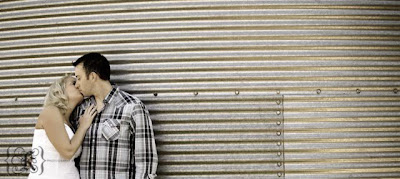I've been following a conversation on Chase Jarvis' blog about two French students who staged a series of photos and entered them in a photojournalism competition. They won the prestigious event and instead of just accepting the award and the money, they revealed that they had setout to show that the conventions of what makes a great photojournalistic piece can be imitated and in fact rewarded.
There have been some very candid conversations on Chase's blog about these conventions. Sorta the old newsroom philosophy of "If it bleeds it leads."
An interesting observation was posted by someone named Marco Aurelio:
"....Photo-journalism is hobbled by the exoticizing of the Other, and its perpetual marriage to shock and awe obsessions with viewers where only the victimization of Others is important, and nothing else. it sells a lot more advertising space to cleave at society's morbid obsession with Others' pain. Where are the stories of life's endurance? if it doesnt have pain or blood on the shirt, it isnt photo-journalism?"
Amen brotha!
I must admit to also be captivated by the lure of photojournalism (PJism). The idea that you can travel the world, see world events first hand, while capturing and transmitting those events around the globe all for money, is very seductive, as I'm sure it is for many. A life of travel and adventure and $$ too? Yes, please! But much like a Margaret Atwood novel it's all about exploiting the pain and the gore. The sufferring and the catastrophe.
Two weeks ago, when I was out shooting with Jodi in Fort Frances, we got talking about my dreams as a photographer. I confessed that I'd love to shoot portraits and weddings from April to early November and then work as a photojournalist from November to April (coincidentally right when Canada gets blasted by piles of snow...go figure :D ) but that I didn't see myself as the traditional taking pictures in a war zone sort of pj.
Really, what I'd like to shoot and tell is exactly what Marco says in his post. The stories of endurance. The human story of everyday life. The awesome thing about it is that sort of story is everywhere. I don't have to go to Rwanda to find it. Now that I have the luxury of not being in that moment, I can see that I had a unique opportunity when I was in Fort Frances to tell the story of that border town.
Affected by the US economy and the global economy, with the main industry being the pulp and paper mill (the only one still open between Sudbury and Winnipeg I believe) there was ample opportunity to show a place that is struggling to survive and the people who are making a go at it: hotel managers, truck drivers, school teachers, nurses, hair stylists, restaurant owners, pastors, first nation's school directors... such a varied cross section of those who live and work there and whose livelihood is affected by the larger world around them.
Maybe it's something I'll return to do some day, but I'm kicking myself now for not taking the extra time to grab images of the town itself since for a week I was invited into the lives of not just one photogapher and her family, but also the lives of everyone else that I had the chance to take pictures of. Not that there really was the time for that sort of thing while I was there. Regardless, there is a story there and it's a situation that I'll be more open to looking for in the future.
I've always been a story teller and I think portrait work calls to me because of the ability to get to know other people's stories, especially when you meet them in their environment. There are many stories in my area that need to be told. Not just the mainstream ones. The maintenance of farmland, protected greenspace and the natural aquifers in my area is an important story. I've started a portion of that story (at least image wise) by shooting pictures of some of the government owned property near my house (land purchased for the creation of a second major Toronto airport). I need to pick up that story again... Food for thought. At least for me that is.
More soon...
Nikon V2 In My Bag
10 years ago

































